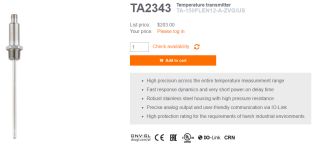Hi.
Almost every time when working with PT100 probes the customers ask me "have the probes been calibrated?"
The reason for the customers to ask for it is that they often use their own probes also and can see that their values is slightly different from mine so their values is ofcourse the correct one.
I often claim that the values is different because the probes are installed different and meassures from not the exact same position etc.
That's my guess but i dont know for sure if my claim is correct.
(I'm not responsible for the installations so nothing i can do there)
My understanding is that there should never be any needs to calibrate them and i have never seen an option in any of the softwares that i use to "calibrate" them.
I mostly use siemens plc (1200 and 300) and for PT100 i use RTD analog modules and just reads out the value i get from the module and presents it as the real value. (No scaling required when using rtd)
I could ofcourse use some offset value to change the process value but should i?
So in short: Can i calibrate the probes and how do i respond to the customers in a correct way when they ask about calibration?
Almost every time when working with PT100 probes the customers ask me "have the probes been calibrated?"
The reason for the customers to ask for it is that they often use their own probes also and can see that their values is slightly different from mine so their values is ofcourse the correct one.
I often claim that the values is different because the probes are installed different and meassures from not the exact same position etc.
That's my guess but i dont know for sure if my claim is correct.
(I'm not responsible for the installations so nothing i can do there)
My understanding is that there should never be any needs to calibrate them and i have never seen an option in any of the softwares that i use to "calibrate" them.
I mostly use siemens plc (1200 and 300) and for PT100 i use RTD analog modules and just reads out the value i get from the module and presents it as the real value. (No scaling required when using rtd)
I could ofcourse use some offset value to change the process value but should i?
So in short: Can i calibrate the probes and how do i respond to the customers in a correct way when they ask about calibration?








